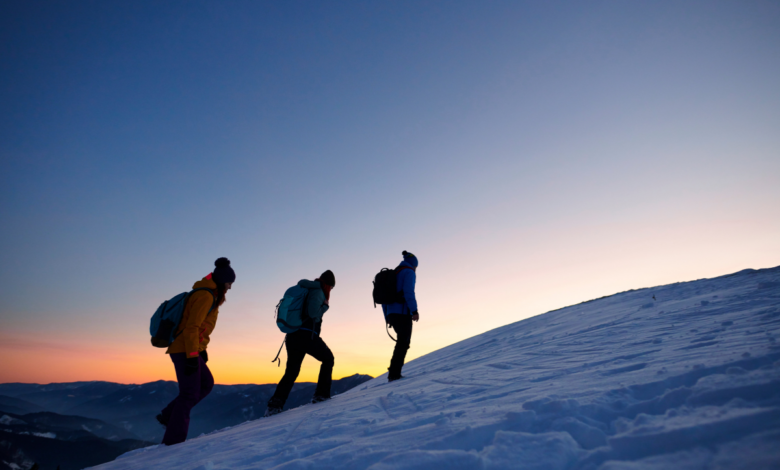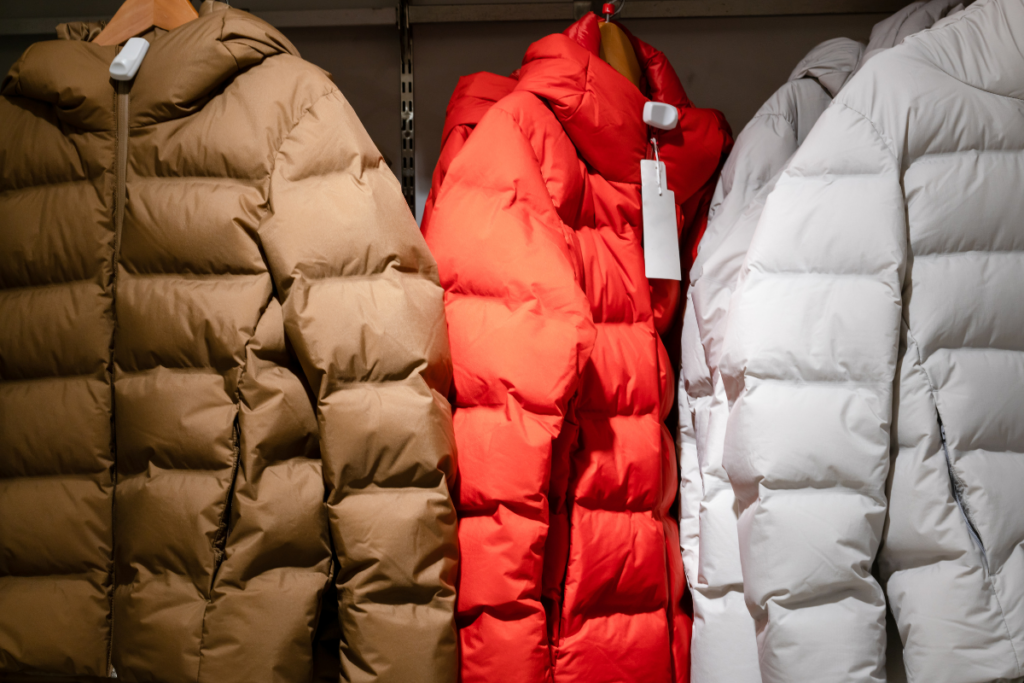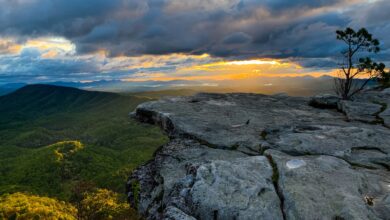What to Wear Hiking For All Seasons: The Complete Guide

A Norwegian saying that sums it up nicely- “There is no bad weather, only bad clothes!”
For beginners, choosing the right hiking outfit can be a big challenge. You need to consider what nature might throw at you and then choose the right materials to ensure comfort. I got it right after much trial and error over the years.
If you are wondering whether to head out and buy a whole new wardrobe for your first hiking trip, don’t. That way you might end up buying gear that is way over the demands of your hike. Once you go through the tips in this article, you might find a few of your existing outfits are good enough.
Do not get me wrong though. Leaving those skinny jeans or the trusty pair of old sneakers behind will save you a lot of misery while on the trail. So, you will need to buy a few specific pieces of hiking attire.
So, without much ado, let’s dive in and find out all about the best hiking outfit.
Choosing the Best Hiking Outfit
To start with, the choice of hiking attire is based on two main points- safety and comfort. Safety is the primary aspect as the main purpose of hiking attire is to protect from the elements. That means you need to pick your clothes based on the weather and terrain.
For example, if you are heading for a higher altitude, you will need heavy jackets to resist the cold and the wind. But for desert hiking trails, you will need lighter clothing. Likewise, a hike during the rainy season will require a waterproof outer layer.
Comfort has a lot to do with choosing the right fabric and fit. The first thing I learned about hiking outfits is to consider cotton clothing as pure evil. Cotton soaks up sweat and takes a long time to dry up. Materials like Merino wool and polyester are better options as they will dry quickly and allow the skin to breathe.
Next, you do not want your hiking clothing to hug your skin like a superhero costume and prevent you from moving freely on tricky trails. You need loose clothing that will allow a full range of motion. Beyond that, loose clothing will allow the air to flow in and remove the heat you are generating.
Proper Fabric
I remember during a hike to Piegan Pass, I started hiking on a cold morning wearing a warm jacket. Within an hour, I was feeling hot and stuffy and was down to a t-shirt.
That brings us to the most effective clothing strategy while hiking- layering or the 3-layer technique. Dividing your clothing into a base, mid, and outer layer allows you to adjust to changing weather conditions, by peeling off like an onion as needed. Each layer needs to be of the right fabric to perform well.
The base layer is ideally made from a breathable and quick-drying fabric like polyester or merino wool. Note, that regular wool is not the right choice for base layer clothing as it takes time to dry and feels scratchy against the skin.
A breathable material allows the perspiration to evaporate from the skin and prevents bacteria from multiplying, allowing you to remain odor-free. You can choose between short or long sleeves depending on the season.
The mid-layer can be a t-shirt or fleece that will help you to feel warmer by retaining body heat. You can take off the fleece if you are climbing a steep incline and the conditions are warm.
I prefer mid-layers with ventilation zips or underarm vents that help with the airflow. Just like cotton, denim becomes super-heavy when wet, so avoid it like plague.
The outer layer is the final protection against the elements. It should be a windproof and waterproof layer with enough durability to resist punctures from thorns or brambles on the trail. The idea is to keep the cold out while allowing the sweat to evaporate. Most brands use proprietary fabrics that are a variety of polyester or nylon with special coatings.
The problem is that waterproofing and breathability do not have a large overlap. And jackets that are highly breathable and warm enough for freezing conditions can be ridiculously expensive. So, you might have to find the right balance between the two.
Check out this episode “A Sportsman’s Life” for some of the latest tips on Winter whitetail hunting in North Texas!
Essential Hiking Attire Components
Knowing about the various components of your hiking attire will help you understand how to dress for hiking. Take a look.
Jackets
It is always safe to carry a protective jacket with you no matter the season. In case the weather deteriorates unexpectedly, you can use the jacket for protection. While jackets come in many varieties you need not pick the heaviest one for a hike.
Waterproof jackets are lightweight and designed for walking in the rain. Softshell jackets provide more warmth and light protection from rain.
For hiking in heavy rain or snow for longer hours pick a windproof jacket with a Gore-Tex-type membrane and special water-repellent coating. These hardshell jackets are heavier and less breathable but provide excellent warmth.
Pants
Full-length hiking pants that wick moisture are a good choice, especially in cold conditions. Many hikers prefer convertible pants that can be transformed into shorts because of their versatility. However, shorts make you more vulnerable to scratches, bug bites, and sunburn. If you are hiking in hot weather and not bothered about a few scratches, you can pick shorts.
Boots
The reason that you need hiking shoes on a trail is that they are built to protect your feet from rocks, water, and rigid roots that stick out. They also provide extra support when you are carrying a heavy pack. Plus, their tread offers a better grip on loose soil and slippery rocks than that of normal tennis shoes.
Hiking boots not only offer better protection but will also keep your feet warm over snowy ground. Besides, they are more durable than sneakers or trail running shoes.
That said, many hikers find hiking boots to be too heavy for comfort. In that case, trail running shoes offer a good middle ground. You can also pick from the best upland hunting boots as long as they have the right tread design for handling rough terrain.
Gloves
Just like clothing, you can layer gloves for better protection against cold. In winter, I use inner gloves that are made from a thin layer of Merino wool.
On top of that, I wear thicker gloves that offer better hand protection. These gloves offer good dexterity and also offer touch-screen compatibility. If needed, a waterproof third layer can be added on top as over-gloves
Hat
Hiking hats should offer protection from the sun from scorching your face and neck. So, wide-brimmed designs are the best choice. At the same time, a hat should be lightweight and breathable. I’d advise picking one with a sweatband lining for comfort.
Features like a removable neck cape may not be the most stylish but are practical additions. After chasing a few runaway hats down the ridgeline, I prefer hats with neck cinch cords that prevent them from being blown away.
Sunglasses
Protecting your eyes from UV rays is essential during a hike. I have seen snow blindness happen due to lack of eye protection and trust me, it is painful. Choose sunglasses that offer 100% protection from both UVA and UVB rays,
For open-air trails, category 3 sunglasses are a good choice. If you are heading into the high mountains with glaciers around, choose a category 4 pair of sunglasses that cut down maximum glare. For higher altitudes, polarized lenses are a better choice, especially if your eyes are sensitive to glare.
Hiking Attire By Seasons
Since hiking is a year-round activity choosing the appropriate clothing for every season is important.
Spring
Even though the weather in spring remains comfortable, you can expect some wetness and cold. Best pick a windproof and waterproof outer layer and a long-sleeve middle layer. Pair quick-drying pants with a waterproof hiking boot for maximum comfort.
Summer
While it might be comfortable to wear shorts and a t-shirt for short summer hikes, you will need protection from UV rays during longer hikes. Breathable clothing is the best choice while walking in the heat. Wear a hat no matter the terrain you are heading towards.
Fall
Conditions in fall are similar to spring but expect the day temperatures to swing during the late hours. I have often started on a bright and warm fall morning and found the weather turn windy and chilly as I approached the summit. Make sure to pack a wind- and waterproof outer layer and carry a fleece mid-layer if you are heading for higher elevations.
Winter
For hiking in winter, it is best to pile up layers. Pick an insulating base layer that will wick moisture and pair it with a warm mid-layer.
Wear a heavy-duty hardshell jacket, along with warm gloves hat, and moisture-wicking socks to keep your extremities comfortable. Even if the temperatures are below freezing, you will still sweat while hiking through a tough trail. The trick is to stay comfortable, without overheating the body.
Frequently Asked Questions About What to Wear Hiking
What not to wear on a hike?
Do not wear moisture-absorbing material like cotton or denim and tight-fitting clothes. Avoid heavy clothing like bulky sweatshirts and winter coats. Choose hiking shoes instead of fashionable sneakers.
Can you wear normal clothes to hike?
You can choose a piece of normal clothing if it serves the purpose of layering while hiking. Avoid cotton and make sure that the fit is not too tight. Also, for inner layers, the material should be moisture-wicking and breathable.
Is it better to hike in pants or shorts?
Choose pants while hiking in cold or rainy conditions. You can wear shorts during summer hikes, but they will not offer protection from UV rays or bug bites.
What is the best outfit to wear when hiking?
The best hiking outfit is the one that offers optimum protection from the environment along with the right level of comfort.
Final Thoughts
Hope that answers the question of what to wear while hiking.
With the outdoor industry exploding in the past few years, you will find a gazillion of options on the market. The key to choosing the best hiking clothes is to know what nature might throw at you. Next, focus on the right balance of comfort and technical performance.
Now, individuals may have different preferences. Some do not feel cold at all while others might shiver even when dressed like a yeti. If you are a first-timer, my advice is to plan wisely and take the concept of layering seriously.
So go ahead and get started with it.




